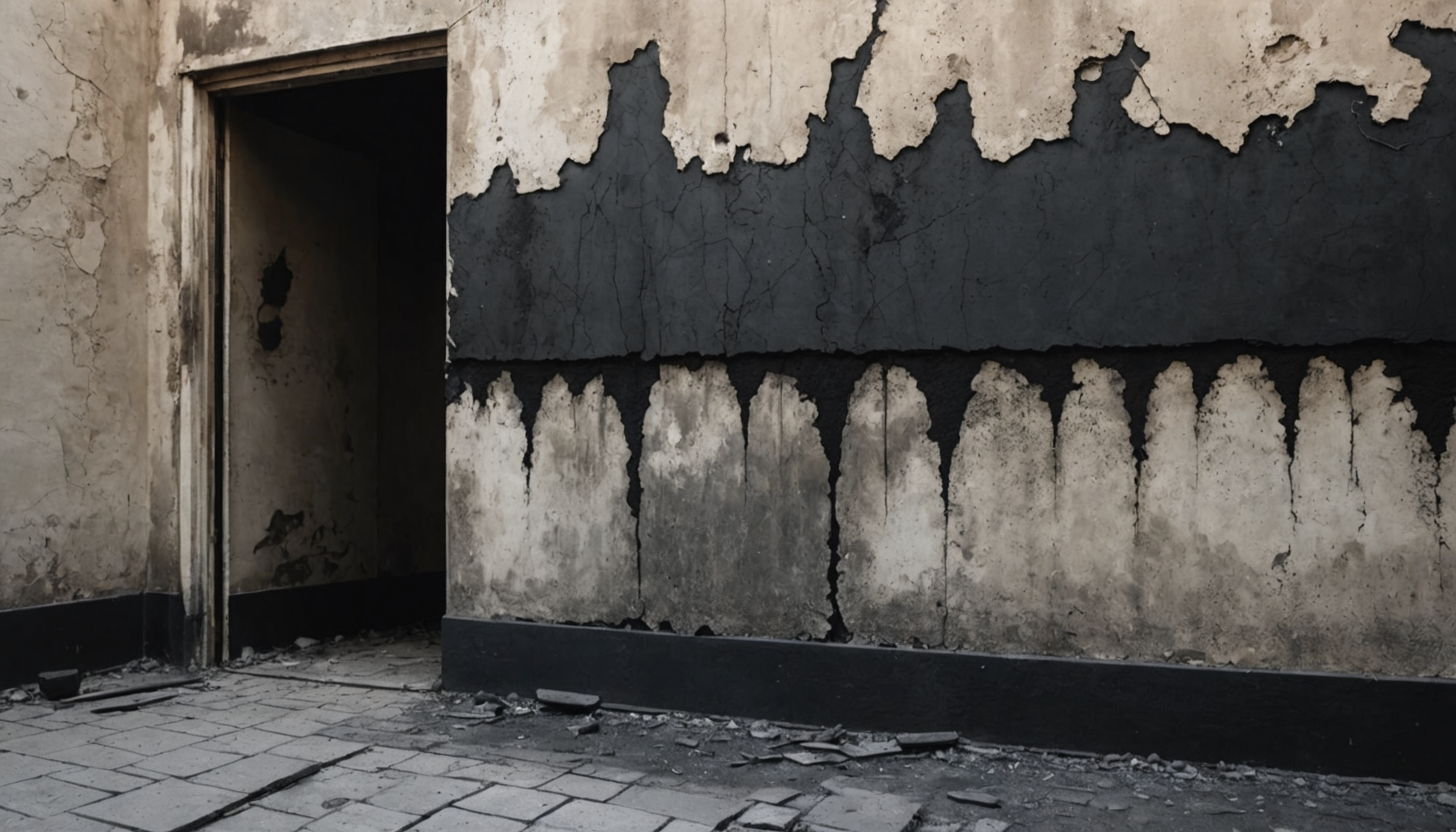Assessing fire damage effectively is a crucial step toward a successful restoration process. Once the flames are extinguished and everyone is safe, the next vital action is to evaluate the extent and nature of the damage caused by the fire. This assessment will serve as the foundation for all subsequent actions, from determining immediate safety measures to planning the full restoration process.
Fire damage can manifest in various forms, including structural damage to the property, smoke and soot residue, and compromised electrical systems. It’s essential to conduct a thorough visual inspection to identify visible problems and hidden issues that might pose ongoing risks or challenges. This comprehensive assessment should ideally be carried out by professionals experienced in handling fire damage restoration, as they can expertly evaluate both the obvious and the subtle impacts of the fire.
Key elements to observe during fire damage assessment include:
- Structural Integrity: Inspect walls, ceilings, and floors for any weakness or instability caused by intense heat.
- Smoke and Soot Residue: Determine the extent of soot and smoke penetration, which can affect air quality and surfaces throughout the home.
- Water Damage: Recognize damage from firefighting efforts, including saturated materials and potential mold growth.
- Electrical Systems: Assess the condition of the electrical system to ensure there are no hidden hazards.
After the initial assessment, a detailed report should be compiled, documenting all findings. This is not only useful in formulating a restoration plan but also critical when communicating with insurance companies and potential home services providers. Accurate damage assessment helps in estimating the cost and effort required in emergency repairs and long-term restoration efforts, ensuring that the budget aligns with necessary tasks.
To better understand the types of damage and their implications, the following table provides a comparison of common fire damage types and their potential impact:
| Damage Type | Potential Impact |
| Structural | Compromises building integrity; requires professional inspection and potential rebuilding. |
| Soot and Smoke | Causes surface discoloration and odor; and needs thorough cleaning and potential replacement of affected materials. |
| Water | Can weaken structures and lead to mold; necessitates drying and dehumidifying. |
| Electrical | Presents potential fire risks; requires inspection and possible rewiring. |
The importance of a meticulous fire damage assessment cannot be overstated, as it lays the groundwork for a cost-effective and comprehensive restoration process. By understanding the full scope of damage inflicted by the fire, homeowners and professionals can plan strategically to restore safety and functionality to the home.
Immediate safety measures
When a fire has affected your property, ensuring immediate safety is paramount. The fire may have left the structure unstable and introduced numerous hazards, so it’s crucial to prioritize taking swift and effective measures to protect everyone involved. Here is a step-by-step guide to ensuring safety in the aftermath of fire damage:
1. Assess Structural Stability:
– Begin by evaluating the structural stability of the building. Look for visible signs of damage, such as cracks, sagging, or any noticeable shifts in the walls, ceilings, and floors.
– Restrict access to any areas that appear compromised until a professional has determined they are safe.
2. Secure the Environment:
– Cordoning off the affected areas prevents unauthorized entry that could lead to injuries.
– If windows or doors have been damaged, consider boarding them up to protect against weather elements or additional trespassing.
3. Ensure Safety of Utilities:
– Immediately turn off gas and electricity to prevent further accidents, especially if there are any signs of damage to the electrical wiring or gas connections.
– Contact utility service providers to inspect and ensure the safety of these connections before resuming their use.
4. Ventilation:
– Open windows and doors in unaffected areas to allow fresh air to circulate, which helps to dissipate smoke and prevent respiratory issues.
5. Address Health Hazards:
– Consider the air quality inside the home; if soot or lingering smoke is present, use air purifiers if possible to improve conditions.
– Protective gear, such as masks and gloves, should be used when re-entering the property to minimize exposure to harmful particles or contaminants.
6. Remove Dangerous Debris:
– Carefully remove any debris that poses a tripping hazard or could cause injury. This may include broken glass, sharp objects, or any loose materials.
– Use appropriate equipment, like thick gloves and goggles, to protect against cuts or abrasions during the cleanup.
7. Fire Department Clearance:
– Ensure that the local fire department has declared the site safe for entry after extinguishing the fire. They typically will offer additional instruction on immediate precautions based on their assessment.
8. Document the Scene:
– Take photographs or videos to capture the extent of the fire damage for insurance purposes before cleanup begins. This documentation is crucial for any emergency repair claims or financial support you might seek.
9. Seek Professional Assessment:
– Hire experienced professionals in fire damage restoration for a more thorough inspection and to ensure all potential risks are identified and managed.
– Engage with a licensed contractor to create a comprehensive plan for emergency repairs if necessary to address critical safety concerns promptly.
By following these immediate safety measures, you not only protect occupants and ensure the integrity of the property but also set the stage for a more organized and efficient restoration process. Safeguarding your home and those within is the first step toward recovery after a fire incident, paving the way to a well-structured plan for repair and restoration.
Restoration process overview
Once safety measures are implemented, the intricate journey of restoring your property begins. The restoration process is comprehensive, embracing a strategic sequence of activities designed to address both visible and hidden fire damage. This step is essential not just for cosmetic restoration but also for ensuring the home is safe and habitable once more.
Skillful cleaning is one of the foundational elements of restoration. This involves the removal of smoke residue, soot, and any lingering odors caused by the fire. Specialist cleaners employ specific techniques and solutions to reduce not only the physical contaminants but also the potential health hazards they present. This step might also involve the use of air purifiers and ozone generators to clean the air effectively.
Following cleaning, structural repairs take the forefront. Damage from fire can weaken the integrity of a building, necessitating emergency repair in some cases to prevent further deterioration. Whether it’s replacing drywall, roof sections, or flooring materials, these repairs are critical to restoring the structural soundness of the home. Professionals will often work closely with building inspectors to ensure all repairs meet safety standards and local building codes.
The restoration of utilities is another essential step. Fires can severely damage electrical, gas, and plumbing systems. Electricians and plumbers will evaluate these systems and replace or repair components as required to ensure safety and functionality. This part of the process is vital because compromised utilities increase the risk of future emergencies.
Attention is also given to contents restoration, where salvageable personal items, furniture, and decor are cleaned, deodorized, and repaired. This step often involves specialized techniques, from dry cleaning clothing to using ultrasonic technology for electronics. Engaging with professional home services can help ensure these valuables are treated with the care required to restore them to pre-fire conditions.
Throughout the process, documentation remains a critical task. Keeping a detailed account of all restoration activities, including photographs before and after each step, supports insurance claims and audits. It also helps track the progress and budget adherence, which is crucial for managing the overall cost of the project.
Engaging with qualified restoration companies brings the advantage of project management expertise, ensuring each phase is completed efficiently and to a high standard. Their experience in navigating the nuances of fire restoration — from liaising with home services to anticipating secondary damage — underscores the multifaceted nature of the recovery effort.
By efficiently restoring the property and ensuring every aspect is attended to with precision, homeowners can achieve not only a return to normalcy but also increased resilience for future challenges. The journey from devastation to revitalization is complex but manageable with the right expertise and a systematic approach.
Cost breakdown and budgeting
Budgeting for fire damage restoration is crucial in alleviating unnecessary financial stress and ensuring a smooth recovery process. To effectively plan your budget, it is imperative to understand how costs are distributed throughout the restoration journey. Whether you’re dealing with minor damage or significant destruction, having a clear financial roadmap helps manage both expected and unforeseen expenses.
A significant portion of the budget will go towards structural repairs. These repairs encompass rebuilding damaged areas, which might include replacing drywall, fixing roofing, and ensuring foundational stability. The complexity of structural repairs often demands the expertise of skilled contractors who can ensure all work complies with local building codes and safety standards. Engaging with qualified home services through directories like LocallyFind.com can connect you with trusted professionals who offer competitive rates and guaranteed workmanship.
Next, addressing the smoke and soot removal requires specialized cleaning techniques. The cost here will vary depending on the extent and type of damage, and may also involve the use of air purifiers and deodorizing agents. Professional cleaning services can offer assessments to determine how pervasive the smoke damage is and recommend appropriate cleaning strategies that eliminate odors and health hazards efficiently.
Electrical and plumbing repairs also contribute significantly to total restoration costs. Fire can severely affect these systems, necessitating meticulous inspection and repair by certified electricians and plumbers. Given the complexities involved, this is not the area to cut corners; ensuring the safety and functionality of these utilities is paramount for both the safety of the occupants and the home itself.
Personal contents restoration can often be overlooked, yet it can add considerably to the overall cost. Recovering treasured items like furniture, clothing, and electronics requires specialized restoration processes. Depending on the items’ condition, you may face additional costs for cleaning, repair, or replacement. Many restoration companies offer comprehensive contents restoration services, often included in their overall package, which can provide cost-saving benefits.
Once you have a detailed understanding of where the financial requirements lie, creating a detailed budget becomes more feasible. It’s advisable to set aside a contingency fund – typically 10-20% of your total budget – to cover unexpected costs that inevitably arise during restoration.
For those navigating insurance claims, having a comprehensive report and documentation of all damage and associated costs is indispensable. It facilitates smooth communication with insurance adjusters and helps ensure you receive the maximum compensation you’re entitled to under your policy. Additionally, exploring financial assistance programs or grants can supplement insurance payouts, relieving some of the burdens from personal savings.
Ultimately, detailed planning and engaging with the right professionals are key in budget management for fire damage restoration. Utilize resources such as LocallyFind.com to connect with reputable home service providers who can offer tailored solutions that fit your financial plan. Taking a proactive stance in managing your budget will not only enhance the efficiency of the restoration process but also provide peace of mind as you work towards rebuilding your home.
Insurance and financial assistance
Navigating the realm of insurance and financial assistance can be critical in managing the costs associated with fire damage restoration. One of the first steps homeowners should take is to contact their insurance company as soon as possible after the incident. It is important to understand the specifics of your policy regarding fire damage and the type of coverage you have for different aspects of the restoration process.
When reaching out to your insurance provider, be prepared with detailed documentation of the damage. This includes photographs, videos, and a comprehensive inventory of affected items, alongside any reports from fire officials or restoration professionals. This documentation is crucial for substantiating your claim and ensuring you receive the appropriate financial support for emergency repairs and other restoration activities.
Insurance policies can vary significantly, so it’s essential to know whether your coverage includes just structural damages, or if it also provides for personal belongings and additional living expenses while your home is undergoing repairs. Policies may offer reimbursement for some home services, including professional cleaning, temporary housing, or even replacement costs for damaged items.
In some cases, insurance might not cover everything. Therefore, homeowners should consider additional financial assistance options. Government programs—such as those offered by the Federal Emergency Management Agency (FEMA) or local disaster relief organizations—may provide aid for those who qualify. Additionally, community resources or nonprofit organizations often have funds available for individuals affected by fires, which can help bridge the gap between insurance payouts and out-of-pocket expenses.
Homeowners should also be aware of the possibility of low-interest loans from government agencies aimed at facilitating disaster recovery. These loans can provide the necessary capital to expedite the repair and rebuilding process without exerting undue financial pressure.
Leveraging the expertise of companies specializing in fire damage and restoration can streamline communications with insurers and help maximize your benefits. These companies often work closely with insurance adjusters to ensure all fire-related damages are accounted for and that claims are handled efficiently.
Ultimately, understanding the details of your insurance policy and exploring supplementary financial support avenues can make a significant difference in how effectively you manage the economic impact of fire damage. Protecting your home and finances requires early, thorough engagement with your insurance company and a proactive approach toward available financial resources.
In conclusion, fire damage restoration demands a methodical approach to ensure a smooth transition from disaster to recovery. Adequate assessment leads to a targeted intervention, while immediate safety measures and a structured restoration process form the backbone of recovery. A careful breakdown of costs and detailed budgeting, supported by meticulous documentation, are essential in managing the financial implications. Engaging effectively with insurance options and identifying potential financial assistance can significantly alleviate the financial strain. Through these comprehensive steps, homeowners can navigate the complexities of fire recovery with confidence and efficiency.


